by David Clarke | Nov 15, 2012 | African Birds, All, Birds, Kenya, Wildlife

This Crowned Lapwing was seen at the Solio Game Reserve, a private 18000 acre reserve just north of Nyeri in central Kenya. Solio has been successful in breeding black rhino and over 120 black and white rhino live there. One appealing feature of the reserve is that you just pay your entrance fee and drive yourself around. It’s quiet and has none of the zebra stripe painted jeeps full of tourists vying for position to get the next shot. At Solio, you just take your time.
According to ‘Birds of East Africa’ by Stevenson and Fanshawe, ‘the crowned lapwing is a bird associated with dry country and grasslands, best identified by head, breast and wing markings. All resident species are known as plovers in Southern Africa. The Crowned Lapwing, (Vanellus coronatus) is 31cm, 12″, has a smart head pattern with a black cap and white crown ring standing out at long distance; the ring accentuates the flat head and steep forehead. It is alert and upright, with yellow eyes and bright red legs.’
Canon 1DMkII with Canon 300mmf2.8L IS lens and x2 extender; ISO400 f5.6 1/640
[socialring]
by David Clarke | Nov 12, 2012 | African Birds, All, Birds, Kenya
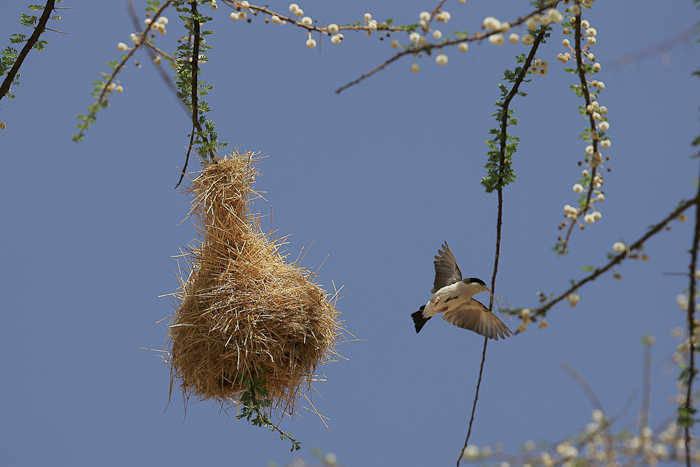 The Social-Weavers (Genus Pseudonigrita) are a different genus from True Weavers (Genus Ploceus), but apart from their colouring – true weavers are mainly predominantly yellow, the social-weavers seem to exhibit similar behaviour. According to Stevenson & Fanshawe’s excellent book, Birds of East Africa, ‘…the Social-Weavers are small birds (4.5″ – 5″) which occur in large flocks, often feeding together on the ground. Their nests are tightly woven balls of grass which hang from the very ends of the the thinnest branches of large trees, often hundreds of pairs breeding together. The sexes are alike.
The Social-Weavers (Genus Pseudonigrita) are a different genus from True Weavers (Genus Ploceus), but apart from their colouring – true weavers are mainly predominantly yellow, the social-weavers seem to exhibit similar behaviour. According to Stevenson & Fanshawe’s excellent book, Birds of East Africa, ‘…the Social-Weavers are small birds (4.5″ – 5″) which occur in large flocks, often feeding together on the ground. Their nests are tightly woven balls of grass which hang from the very ends of the the thinnest branches of large trees, often hundreds of pairs breeding together. The sexes are alike.
The Black-capped Social-Weaver (Pseudonigrita cabanisi) is a ‘small attractive weaver with a black cap and tail contrasting with a brown back and wings, a white bill with a greenish tinge, and red eyes. White below with black streaks on flanks and belly. Flocks inhabit drier country than the Grey-capped Social-Weaver from 200-1300m, including quite arid areas if large trees are present for breeding.’
I spotted this fellow on a trip to Buffalo Springs Game Reserve, Samburu, Kenya. He was one of many busily constructing their nests in a tree that was overflowing with nests.
Canon EOS 1DMkII with Canon 300mm f2.8L IS lens, ISO 200 f4.5 1/2500
[socialring]
by David Clarke | Jul 23, 2012 | African Birds, All, Kenya
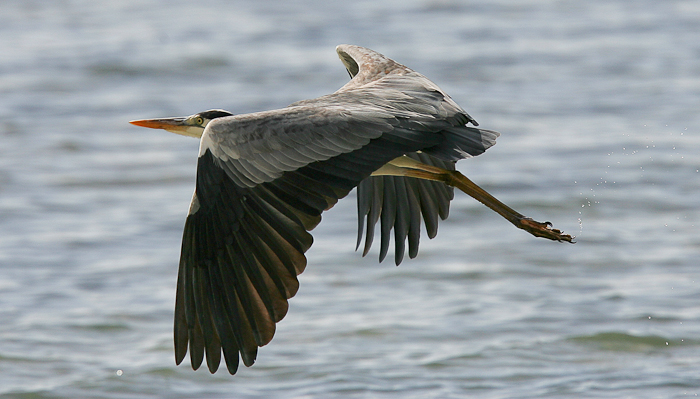
This Grey Heron (Ardea cinerea), along with some of his mates, patrols the shallows in the coral that are exposed when the tide is going out along the beach at Mtwapa, a few miles north of Mombasa.
He is quite used to people since there are fisherman around. He let me get fairly close, and then when his comfort zone was breached took to the air and flew a little way up the beach. As I approached again, he flew back the beach. We played this game for a while until he got bored, or maybe I got too hot.
For this shot, he had just taken off – note the water flying off his feet.
Canon 1DMkII with Canon 300mm L f2.8 IS lens with 1.4 extender; ISO200 f5 1/4000
[socialring]
by David Clarke | Jul 21, 2012 | African Birds, All, Kenya
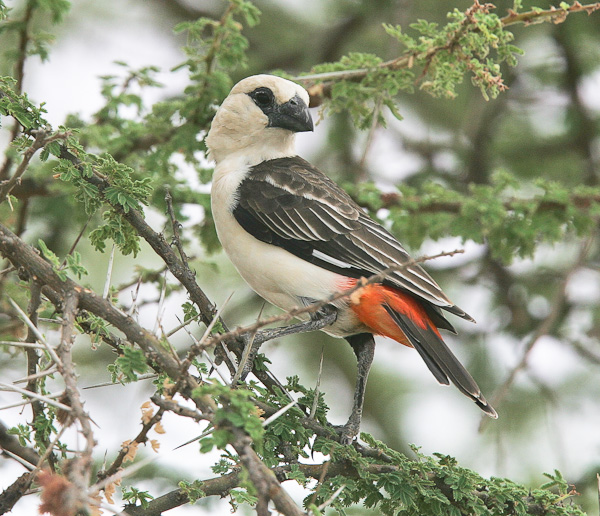
Buffalo-Weavers are large weavers with heavy bills. The _Dinemellia_ genus, of which the White-headed Buffalo-Weaver (Dinemellia dinemellia) is one is distinctly orange-red, brown and white. This bird is very distinctive, especially in flight, when its bright orange-red rump and large white wing patches are very clear. The sexes are alike. Like this one, that was spotted in Buffalo Springs, Samburu, Kenya, they are often seen on the ground or low in the trees. It certainly wasn’t too bothered by my presence and allowed me to get very close for this shot.
Canon 1D MkII with Canon 300mm f2.8L EF IS lens and Canon 1.4X extender. ISO200 1/320 at f9.
[socialring]
by David Clarke | Jul 18, 2012 | African Birds, All, Kenya
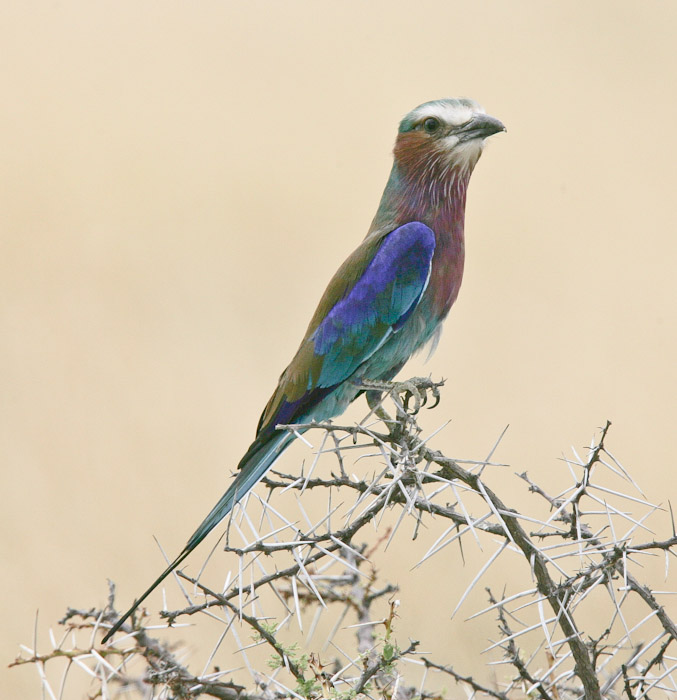
I had stopped to take some shots of the white-throated bee-eater shown on another page when this lilac-breasted roller (Coracias caudata) decided to get in on the action. He chased away the bee-eater and then clearly very aware of exactly how to pose, he positioned himself on the thorn bush, lifted one claw into a classic Victorian drawing-room stance and angled his head to look into the middle distance. He allowed me half a dozen frames before flying off, satisfied that I had captured his best side.
Photographed in Buffalo Springs, Samburu, Kenya, 13 April 2012
Canon 1DMkII with Canon 300mm f2.8L IS lens and a Canon 1.4 extender.
ISO 200 420mm f9 at 1/1000
[socialring]
by David Clarke | Jul 17, 2012 | African Birds, All, Kenya
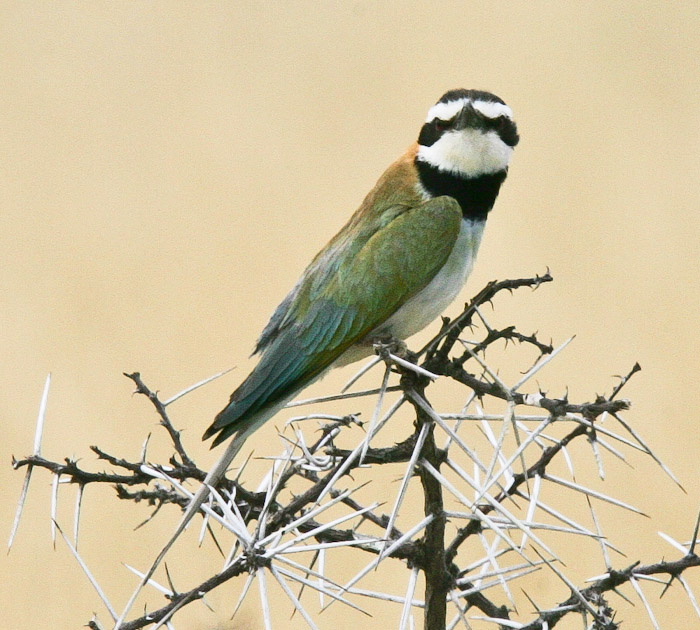
This inquisitive white-throated bee eater (Merops albicollis) had checked out his surroundings and then eye-balled me to make sure that he approved of the camera and lens. He was so engrossed that he didn’t see a lilac-breasted roller who wanted to be centre stage bearing down on him. He was evicted in a flurry of feathers and the roller got his way.
Photographed in Buffalo Springs, Samburu, Kenya on 13 April 2012
Canon 1DMkII with bee-eater approved Canon 300mm f2.8L IS lens and 1.4 extender.
ISO200 420mm f9 at 1/1000
[socialring]

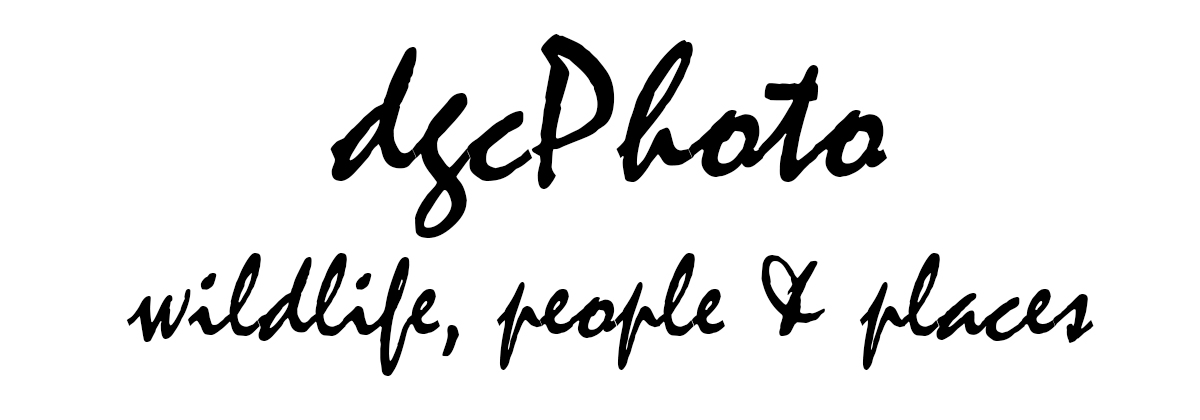
 The Social-Weavers (Genus Pseudonigrita) are a different genus from True Weavers (Genus Ploceus), but apart from their colouring – true weavers are mainly predominantly yellow, the social-weavers seem to exhibit similar behaviour. According to Stevenson & Fanshawe’s excellent book, Birds of East Africa, ‘…the Social-Weavers are small birds (4.5″ – 5″) which occur in large flocks, often feeding together on the ground. Their nests are tightly woven balls of grass which hang from the very ends of the the thinnest branches of large trees, often hundreds of pairs breeding together. The sexes are alike.
The Social-Weavers (Genus Pseudonigrita) are a different genus from True Weavers (Genus Ploceus), but apart from their colouring – true weavers are mainly predominantly yellow, the social-weavers seem to exhibit similar behaviour. According to Stevenson & Fanshawe’s excellent book, Birds of East Africa, ‘…the Social-Weavers are small birds (4.5″ – 5″) which occur in large flocks, often feeding together on the ground. Their nests are tightly woven balls of grass which hang from the very ends of the the thinnest branches of large trees, often hundreds of pairs breeding together. The sexes are alike.




